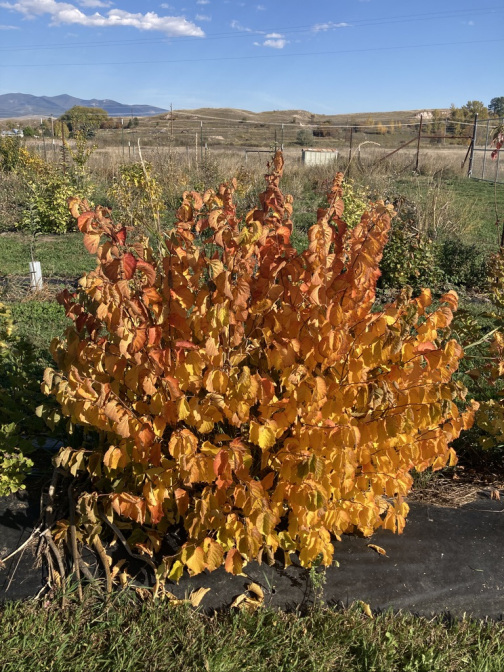
Welcome to the most diverse orchard in Montana. We grow 245 cultivars of trees, shrubs, and perennial vegetables.
About us
Have you ever wondered why no one fertilizes, weeds, and sprays a natural forest ecosystem? It is so productive, yet it doesn’t have the same issues that we face in our agricultural fields. It seems that we could learn a lot from just observing how natural systems operate and applying that to how we farm. That is why Sapp’s Permaculture Orchard is designed to emulate the way ecosystems function. There are 4 main design elements that help it accomplish this:
Diversity within the Rows- The orchard is organized in rows but the cultivar of a tree is never the same as the one next to it. This helps reduce competition between trees and reduces the pressure that we receive from pests. For example: If you have a row of all apple trees, a coddling moth has a very easy time moving from tree to tree. It only needs to travel a small distance and so it is more likely to be successful. If the next apple tree is many trees away then it must expose itself to predators, weather, and fly a much greater distance to be successful. This design element also has synergy with the second and fourth element. You might think that this causes a mass amount of confusion in the orchard with all the trees mixed up. But there is another way to organize them. They can be organized by when they fruit. The orchard is grouped into 8 zones, based on when the trees will produce ripe fruit. This allows me to walk down only the rows that are ripe for a specific timeframe and cut down on time spent searching for ripe fruit.

Image By: Stefan Sobkowiak
Layers of Vegetation- Most orchards have one layer of producing vegetation: The tree layer. We have planted three! Trees, shrubs, and perennial vegetables. The tree layer of vegetation does not collect all of the sunlight nor do they use all of the space. Shrubs scoop up the leftover sunlight, produce a crop, and provide much needed habitat for insectivorious insects. The last layer does the same with the last of the sunlight, all within a space that is normally wasted.



Creation of Fertility- The orchard is planted in trios. Meaning every third tree is a nitrogen fixing tree. Example: Apple x Pear x Nitro x Plum x Cherry x Nitro. This ensures that every fruit tree shares one side of the row with a nitrogen fixing tree. The nitrogen fixing trees sequester fertility from the atmosphere and therefore reduce the amount of our annual fertility inputs.

Image By: Stefan Sobkowiak
Allies- The orchard has many allies that we try to encourage to live in and around it. Solitary bees Pollinate the trees and so we have a massive bee “house” for them. Birds provide a range of services from pest control to fertilization. We have bird houses for various species throughout the orchard. Many plants in the orchard are associated with housing and feeding insects that prey on orchard pests. We have also created space and perches for a variety of predators including bats, owls, hawks, eagles, badgers, foxes, stoats and skunks. Lastly, the layers and diversity of vegetation here create optimal food sources, places to hunt, and a variety of housing for all of our valuable allies.



I am not the first author of these principals. I learned them from my many teachers in the Orchard/Permaculture community. A special thanks goes out to my main mentor: Stefan Sobkowiak. The creator of the original Permaculture Orchard.
